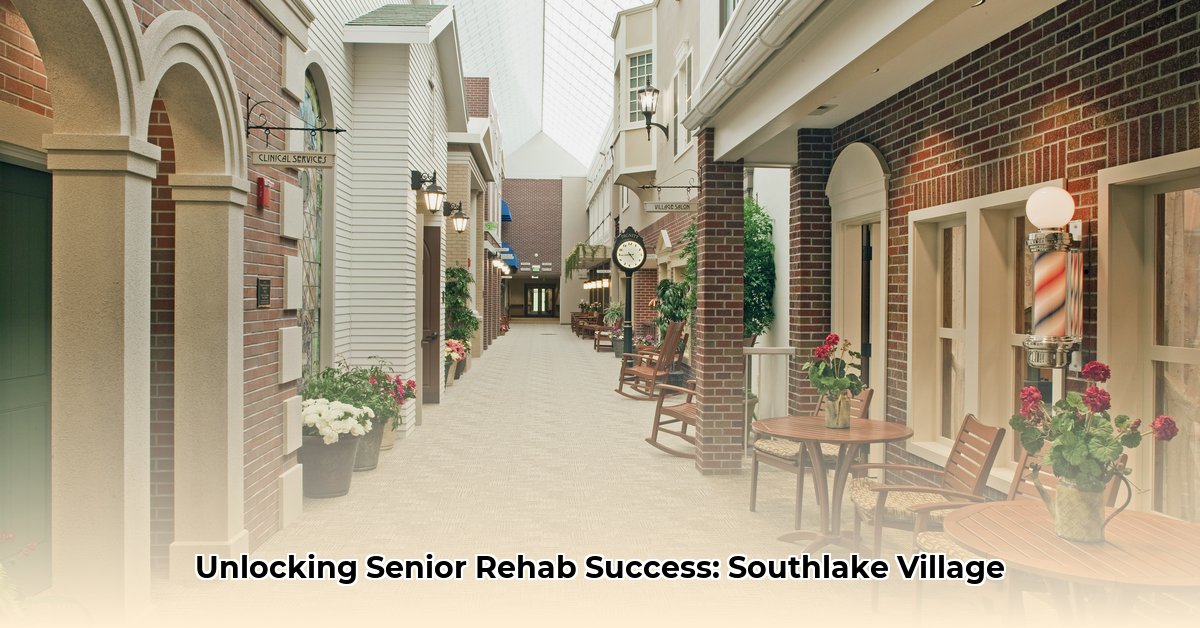
Southlake Village Lincoln, a Vetter Senior Living facility, distinguishes itself through a personalized approach to senior rehabilitation. Rather than a standardized program, they tailor services to individual needs and goals, focusing not just on physical therapy but on restoring independence and confidence. This personalized journey aims to return residents to fulfilling lives. For another example of personalized senior care, see this facility.
A Personalized Approach to Senior Rehabilitation
The facility's commitment to individual care is evident in its embrace of mobile resident charting. This technological advancement streamlines care, improves record-keeping, reduces medical errors, and allows staff more time for direct resident interaction. Knowing that a loved one's care team has instant access to updated information offers significant peace of mind. This isn't a futuristic concept; it's their daily practice. How does this impact patient outcomes? While quantifiable data on improved recovery times or reduced readmission rates is currently unavailable, anecdotal evidence suggests a positive correlation between increased staff-patient interaction and improved patient morale.
Comprehensive Discharge Planning: A Smooth Transition Home
Recovery doesn't end at discharge. Southlake Village Lincoln provides a comprehensive discharge planning process, ensuring a smooth transition back home or to another care setting. This proactive support guides residents and families, easing anxieties and fostering readiness for the next chapter. Recognizing the potential stress of this transition, the facility emphasizes a supportive and informative approach. What specific strategies do they employ? While details on individual support plans are not publicly available, the emphasis on proactive communication and resource provision highlights a commitment to successful transitions.
Areas for Improvement: The Need for Data Transparency
While Southlake Village Lincoln excels in personalization and technology, opportunities for improvement exist. The absence of readily available data, such as patient satisfaction scores, readmission rates, and average lengths of stay, limits a comprehensive evaluation of their effectiveness. Increased transparency regarding staff-to-patient ratios and detailed staff training programs would significantly enhance public trust and confidence. This improved data availability could also facilitate more efficient evaluations against other high-performing facilities. What’s the impact of this lack of data? Without robust quantitative data, fully assessing the efficiency and effectiveness of the facility's care becomes considerably more challenging.
A Framework for Future Enhancement
To further enhance services, several key stakeholders need to collaborate:
Vetter Senior Living: Implement comprehensive data collection systems, conduct regular patient satisfaction surveys, and invest in cutting-edge technologies and facility expansions. A focused marketing strategy to attract both patients and high-quality staff is also crucial.
Patients and Families: Actively share experiences and provide constructive feedback. Advocating for patient-centric policies and technological improvements will directly contribute to the facility's overall quality of care.
Regulatory Bodies: Continue routine inspections to ensure regulatory compliance and collaborate to define best practices in senior care technology and discharge planning. Developing guidelines to improve care quality will benefit the entire sector.
Healthcare Professionals: Engage in ongoing professional development and actively share best practices. Promoting increased funding for research and development within senior care will ultimately improve standards across the board.
Addressing Key Challenges:
To maintain high standards of care, proactively addressing potential challenges is critical. These include technology malfunctions, staff turnover, regulatory non-compliance, patient safety incidents, and negative reviews. Mitigating these risks involves strategies such as robust IT support, competitive salaries and benefits, strict adherence to regulations, stringent safety protocols, and proactive reputation management. Are these challenges unique to Southlake Village Lincoln? No. They are common to many facilities, highlighting the ongoing need for vigilance and improvement within the healthcare industry.
Conclusion:
Southlake Village Lincoln demonstrates significant progress in senior rehabilitation. By addressing the identified areas for improvement and maintaining its commitment to patient-centered care, Southlake Village Lincoln can solidify its position as a leading facility. The future of senior care necessitates innovation, data-driven decision-making, and a dedicated commitment to compassionate care – a trajectory Southlake Village Lincoln is well-positioned to lead. The absence of readily available quantitative data currently limits a complete assessment of its overall performance, however, the facility's commitment to personalized care and technological advancements provides a compelling foundation for future success.